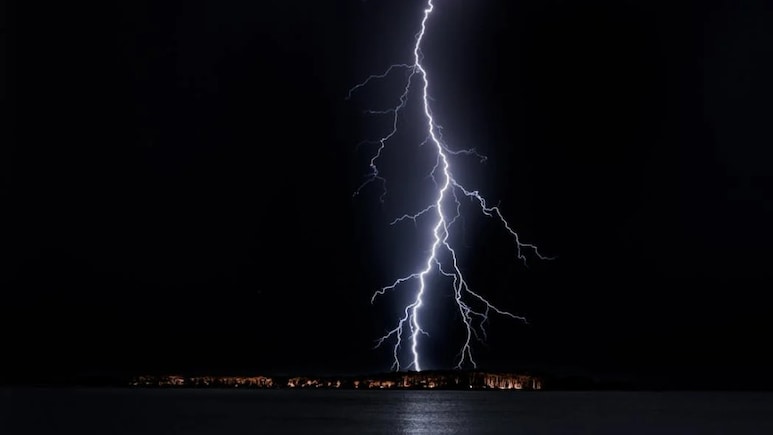
- Lightning bolt from Texas to Kansas in 2017 measured 829 kilometres in length
- The 2017 megaflash surpassed previous record by 61 kilometres
- GOES East satellite data enabled detection of this record-breaking lightning strike
A massive lightning bolt that lit up the sky from Texas to Kansas in October 2017 has been confirmed as the world's longest lightning flash, stretching an incredible 829 kilometres (515 miles) across the Great Plains of North America. This record-breaking megaflash surpassed the previous record by 61 kilometres. The World Meteorological Organisation (WMO) announced the discovery on Thursday. Though the strike occurred almost eight years ago, it was only recently discovered.
As per Science Alert, researchers used data from the GOES East weather satellite, which orbits 22,236 miles above Earth's surface, to detect the enormous lightning strike. This satellite technology allowed scientists to track the megaflash, which wouldn't have been possible with conventional ground-based lightning detection networks that only detect ground strikes.
"We call it megaflash lightning, and we're just now figuring out the mechanics of how and why it occurs. It is likely that even greater extremes still exist, and that we will be able to observe them as additional high-quality lightning measurements accumulate over time," said geographical scientist Randy Cerveny of Arizona State University and the World Meteorological Organisation.
The WMO has established a new world record for the longest lightning flash – an incredible 829 km (515 miles) in a notorious storm hotspot in the United States of America. Details: https://t.co/Wxw5ykNW39 pic.twitter.com/lwGQ34TqMH
— World Meteorological Organization (@WMO) July 31, 2025
A megaflash that occurred on April 29, 2020, previously held the record for the longest horizontal distance, covering 768 kilometres across Texas, Louisiana, and Mississippi.
"This new record clearly demonstrates the incredible power of the natural environment. Additionally, WMO assessment of environmental extremes such as this lightning distance record testifies to the significant scientific progress in observing, documenting, and evaluating such events. It is likely that even greater extremes still exist, and that we will be able to observe them as additional high-quality lightning measurements accumulate over time," Professor Randall Cerveny, rapporteur of the WMO's Committee on Weather and Climate Extremes, said in a statement.
How does lightning occur?
Lightning is a spectacular natural phenomenon that occurs when atmospheric turbulence causes particles to collide and generate electrical charge. As the charge builds up, it eventually discharges in a massive burst of electricity, producing millions of volts across the sky.
While most lightning bolts are short, typically less than 10 miles long and often striking vertically, some can travel horizontally through clouds, resulting in enormous bolts. When a lightning bolt exceeds 100 kilometres in length, it's classified as a megaflash, a rare and extraordinary event.
Tracking a megaflash requires meticulous analysis, combining satellite and ground-based data to recreate the event's extent in 3D. However, due to clouds often obscuring part of the strike, these enormous lightning events can easily go undetected, making their measurement even more challenging.
Track Latest News Live on NDTV.com and get news updates from India and around the world

